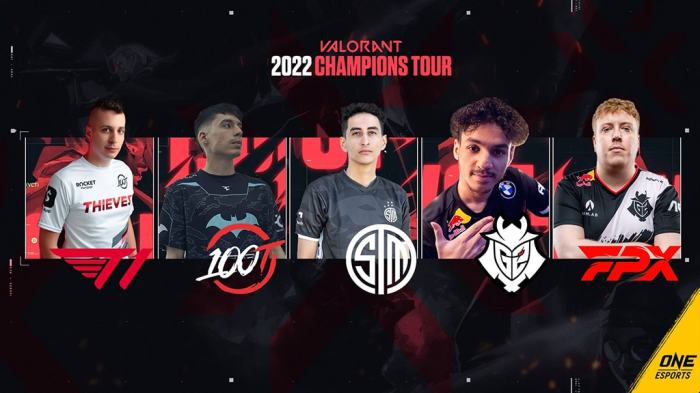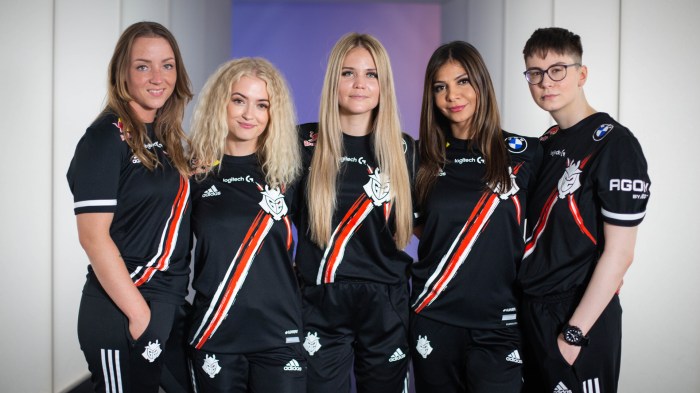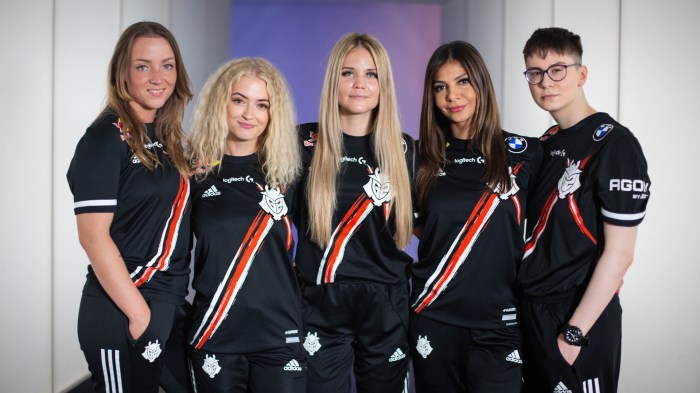Esports teams roster construction is way more than just picking the best players; it’s about building a cohesive unit. This involves understanding individual roles, fostering team synergy, and navigating the complexities of player personalities and dynamics. From scouting promising talent to managing conflicts and maximizing team performance, crafting a winning roster is a strategic process demanding careful planning and execution.
We’ll dive into the nitty-gritty of building a successful esports team, from initial recruitment to long-term management strategies.
We’ll cover everything from identifying key roles and responsibilities within a team to evaluating player skill and chemistry. We’ll also explore different roster strategies, the impact of roster changes, and the crucial role of effective coaching and communication. Plus, we’ll touch on the importance of a team’s public image and how a strong roster can boost an organization’s brand.
Esports Team Roster Composition

Building a winning esports team is more than just finding skilled players; it’s about crafting a cohesive unit that synergizes effectively. Understanding the roles, strategies, and the crucial element of team chemistry is paramount to success. This section dives into the key aspects of building a high-performing esports roster.
Typical Roles and Responsibilities
Different games have different roles, but common themes emerge. For example, in many team-based shooters, you’ll see roles like the “tank” (absorbing damage, initiating fights), the “damage dealer” (high damage output, often fragile), the “support” (healing, buffing teammates), and the “controller” (manipulating the battlefield, zoning enemies). Each role has specific responsibilities, demanding a unique skill set and playstyle.
The tank needs exceptional game sense and survivability, the damage dealer requires pinpoint accuracy and aggressive decision-making, the support needs awareness and tactical thinking, and the controller requires strategic map awareness and an understanding of enemy positioning.
Roster Strategies: Star Player vs. Balanced Team
Two primary strategies exist: focusing on a “star player” or building a “balanced” team. A star player strategy relies on one exceptionally talented individual carrying the team, while the others provide support. This approach can be effective but is vulnerable if the star player has an off day or faces a particularly strong counter. A balanced team, on the other hand, distributes skill and responsibility more evenly, creating a more consistent and resilient unit.
Teams like Fnatic in League of Legends often exemplify this balanced approach, where each member contributes significantly. The choice depends on the team’s overall goals and the available talent pool.
Team Synergy and Chemistry
Team synergy and chemistry are arguably the most important factors determining a team’s success. A team with high synergy understands each other’s playstyles, anticipates their teammates’ actions, and communicates effectively. Good chemistry fosters a positive and supportive environment, enabling players to overcome challenges and perform at their best. Teams lacking this often struggle with coordination, leading to individual mistakes and overall poor performance.
Think of the legendary SK Gaming Counter-Strike team; their synergy was legendary.
Hypothetical Esports Team Roster for Valorant
Let’s design a Valorant team:* Captain/Initiator (Jett): High-impact duelist, excels at aggressive plays and map control. Strengths: Entry fragger, map control.
Sentinel (Cypher)
Provides crucial information and defensive capabilities. Strengths: Information gathering, area denial.
Controller (Viper)
Controls areas with her toxic abilities, creating advantageous engagements. Strengths: Area control, zoning.
Duelist (Reyna)
Self-sufficient duelist, focuses on individual kills and carries rounds. Strengths: High kill potential, independent.
Support/Sentinel (Sage)
Heals and slows enemies, provides crucial utility and defensive capabilities. Strengths: Healing, utility, slow.
Sample 5-Person Roster
| Role | Player | Strengths | Weaknesses |
|---|---|---|---|
| Tank | BigPapa | Exceptional game sense, high survivability | Can be slow to react to flanking maneuvers |
| Damage Dealer | HeadshotHarry | Exceptional aim, high damage output | Can be overly aggressive, lacks tactical awareness |
| Support | AngelWings | Excellent healing and buffing abilities, high game awareness | Can be indecisive in critical moments |
| Controller | MapMaster | Exceptional map awareness, strong zoning abilities | Can struggle in close-quarters combat |
| Flex | AdaptableAce | Adaptable to various roles, strong mechanical skill | Can lack specialization in any single role |
Roster Building and Management

Building and managing a winning esports roster is a multifaceted process that demands a keen eye for talent, strategic thinking, and strong interpersonal skills. It’s not just about finding the best individual players; it’s about creating a cohesive unit that can perform under pressure and adapt to changing meta-game conditions. Success hinges on a robust scouting and recruitment process, effective performance management, and the ability to navigate inevitable roster changes.
Esports Player Scouting and Recruitment, Esports teams roster
The scouting process begins long before a player even steps onto a practice server. Teams utilize a variety of methods, from monitoring online leaderboards and tournament results to actively engaging with the wider gaming community through social media and streaming platforms. Scouting involves identifying players who not only possess exceptional mechanical skill but also demonstrate strong game sense, strategic thinking, and the ability to work collaboratively within a team.
This often involves analyzing gameplay footage, reviewing player statistics, and conducting interviews to assess personality, work ethic, and overall team compatibility. Once potential candidates are identified, a rigorous trial period usually follows, allowing the team to evaluate their performance in a controlled environment and observe their interaction with existing team members. Successful recruitment involves a thorough vetting process, ensuring a good fit both in terms of skill and personality.
Factors in Evaluating Potential Players
Evaluating potential players requires a holistic approach that considers several key factors. Mechanical skill, while crucial, is only one piece of the puzzle. Game sense, the ability to anticipate opponent actions and make strategic decisions, is equally important. Teamwork and communication skills are also paramount, as esports are inherently team-based endeavors. A player’s personality and work ethic are crucial factors to consider.
Will they integrate well into the team’s culture? Are they dedicated to consistent practice and improvement? Finally, evaluating a player’s adaptability and resilience is essential, as they’ll need to handle both victories and defeats with grace and professionalism. Teams often use a combination of quantitative data (KDA ratios, win rates, etc.) and qualitative assessments (coach evaluations, teammate feedback) to develop a comprehensive picture of a player’s potential.
Managing Player Performance, Motivation, and Conflict Resolution
Maintaining a high level of player performance requires a multifaceted approach. Regular feedback sessions, both positive and constructive, are essential. Coaches play a crucial role in providing technical guidance, tactical instruction, and motivational support. Incentive programs, both financial and non-financial (such as opportunities for personal growth and development), can help maintain motivation. Conflict resolution is a critical aspect of team management.
Establishing clear communication channels, implementing team-building activities, and addressing conflicts promptly and fairly are crucial for maintaining team cohesion. A strong team culture that prioritizes mutual respect and support can significantly mitigate the impact of interpersonal conflicts.
Examples of Successful and Unsuccessful Roster Changes
Successful roster changes often involve strategically addressing weaknesses within the team. For example, Team Liquid’s acquisition of CoreJJ in 2018 significantly improved their support role, leading to their successful run at the World Championship. Conversely, unsuccessful roster changes can stem from poor player fit, lack of team synergy, or failure to adequately assess a player’s potential. The infamous implosion of a certain high-profile Dota 2 team in 2019, due to internal conflicts and a poor roster integration, serves as a cautionary tale.
These examples highlight the importance of careful planning and thorough evaluation when making roster changes.
Creating a Comprehensive Player Evaluation System
A robust player evaluation system should incorporate both quantitative and qualitative data. A step-by-step guide might look like this:
- Define Key Performance Indicators (KPIs): Identify the metrics that are most relevant to the game and the team’s strategy. This could include KDA, win rate, objective control, damage dealt, and other relevant statistics.
- Data Collection: Utilize in-game statistics tracking tools and match replays to collect data on individual player performance. This also involves recording and analyzing practice sessions.
- Qualitative Assessment: Incorporate coach and teammate feedback, focusing on aspects like teamwork, communication, attitude, and adaptability.
- Develop a Scoring System: Assign weights to each KPI and qualitative factor to create a comprehensive scoring system that reflects their relative importance.
- Regular Evaluation: Conduct regular evaluations to track player progress and identify areas for improvement.
- Feedback and Improvement: Provide players with regular feedback based on their evaluations, focusing on both strengths and weaknesses.
This system allows for a more objective and comprehensive assessment of player performance, facilitating better decision-making in roster management.
FAQ Section: Esports Teams Roster
What are common reasons for roster changes?
Poor performance, internal conflicts, contract expirations, and the desire to improve team composition are all common reasons.
How important is player social media presence?
It’s increasingly important. A positive online presence can attract sponsors and fans, while negative behavior can hurt the team’s image.
How do esports teams handle player burnout?
Teams often use strategies like mental health support, structured practice schedules, and time off to prevent burnout.
What role does coaching play in roster success?
Coaches are vital for strategy development, player training, and team cohesion. They are crucial to success.
